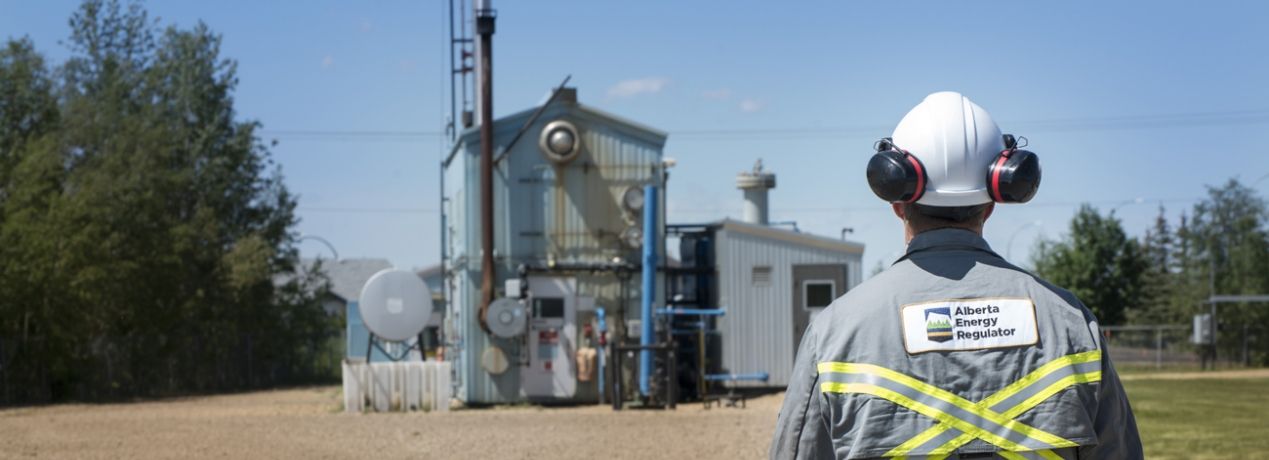Insolvency is when a company is unable to meet their obligations, or their liabilities are greater than the value of their assets – including oil and gas infrastructure. When a company fails to meet their obligations, a receiver or trustee can be appointed by the courts to sell the assets of the insolvent company.
Entering into court-appointed insolvency proceedings is not a licence to ignore the rules and walk away from cleanup obligations.
Roles During an Insolvency
Receiver or Trustee’s Role
A receiver or trustee helps to move AER-licensed assets into the hands of responsible operators and oversees the assets, including response to an incident or emergency, until they are sold. The receiver or trustee has the authority to sell AER-licensed assets to responsible operators, where they can remain in production or be closed through proper abandonment, remediation, and reclamation.
Our Role
We do not control or prevent insolvencies. Our main focus when a company enters into insolvency is to protect the public and the environment. We will also work to ensure that any remaining funds in the estate are used for site cleanup before creditors are repaid.
When assets are sold, a transfer application must be submitted to us for approval. Our final decision ensures that the purchaser is an eligible licensee and that the application meets all requirements.
When There Is No Owner
When there is no legally responsible party to look after an asset, the AER may designate it as an orphan. The responsibility for an orphaned asset is then transferred to the Orphan Well Association (OWA). The OWA is an industry-funded not-for-profit organization that safely closes orphaned assets.
All OWA costs are covered by industry and not the Government of Alberta or Alberta taxpayers. The OWA’s annual budget is covered through a levy paid by industry.
For more information, please contact the OWA.
Insolvencies in Alberta
Information about specific insolvencies, including contact information and materials for court applications, is posted on the following receivers’ websites:
Please note that this is not complete listing of every receiver in Alberta. The Government of Canada’s Office of the Superintendent of Bankruptcy maintains the official records about companies in formal insolvency proceedings. For inquiries related to a specific insolvency, please email @email.
Unpaid Surface Lease Payments
Landowners are eligible to apply for surface lease compensation through the Surface Rights Board. Landowners should contact the Surface Rights Board for information or questions about surface lease payments. The AER and OWA are not involved with surface lease payments.
The Government of Alberta has more information on what to do when a company fails to make annual surface lease payments.
The Farmers’ Advocate Office provides support and resources for farmers and ranchers, including advocacy, energy, utility and surface rights and rural dispute resolution.
Terms To Know
Common terms related to insolvencies include:
- Bankruptcy: A company can place itself into bankruptcy or be placed by a creditor. A trustee is then assigned and may take possession and sell the company’s property.
- CCAA protection: A company that owes more than $5 million to its creditors may seek protection under the Companies’ Creditors Arrangement Act (CCAA) to avoid bankruptcy and renegotiate its debt with its creditors. If granted, it will receive court protection from its creditors for a limited time – which may be extended with court approval – to help plan how it intends to renegotiate its debt. A court-appointed monitor will observe the company’s operations but does not take possession of the company’s property.
- Ceased operations: When an AER-licensed company has contacted us to indicate that it is unable to continue operations and has no remaining staff to oversee and supervise its AER-licensed assets. The AER confirms that the company will not place itself into bankruptcy or be placed into receivership by a lender or secured creditor.
- Receivership: A receivership typically happens when a lender or secured creditor appoints a receiver to recover amounts owed under a secured loan agreement. The receiver may take control and possession, operate, manage, sell, or liquidate a company’s assets.
Contact Us
If you have safety or environmental concerns about an oil and gas site, please call the AER’s 24-hour response line at 1-800-222-6514. We respond to all complaints.
If you have questions about insolvencies, please contact our Customer Contact Centre.


